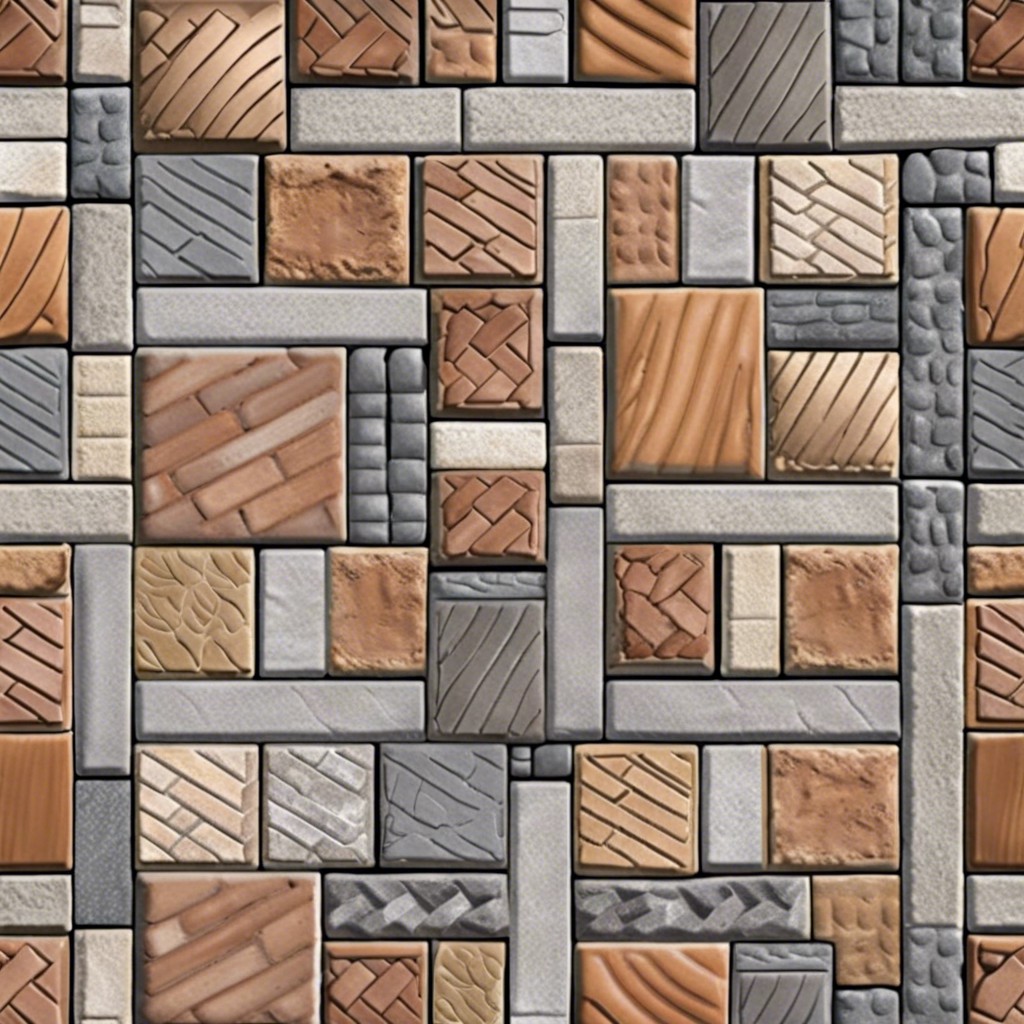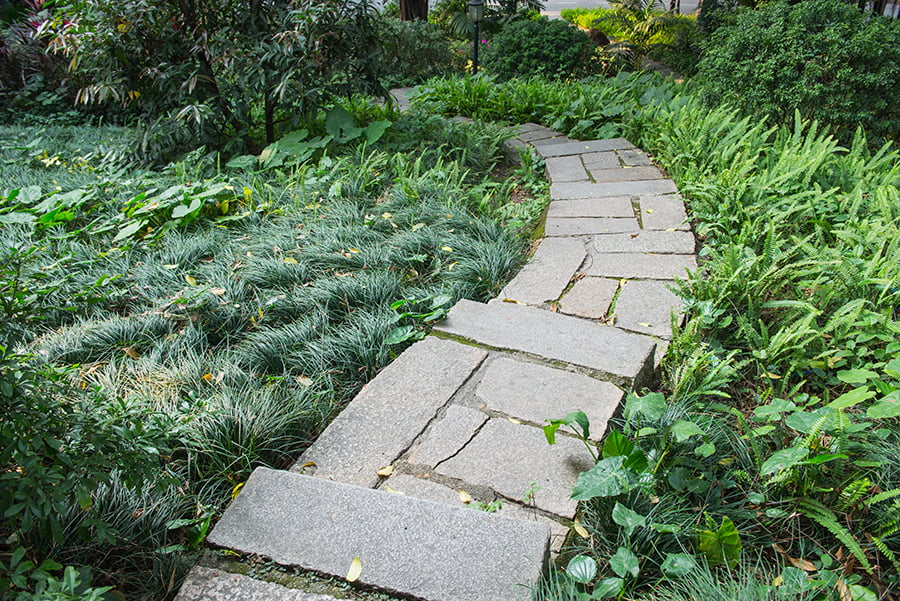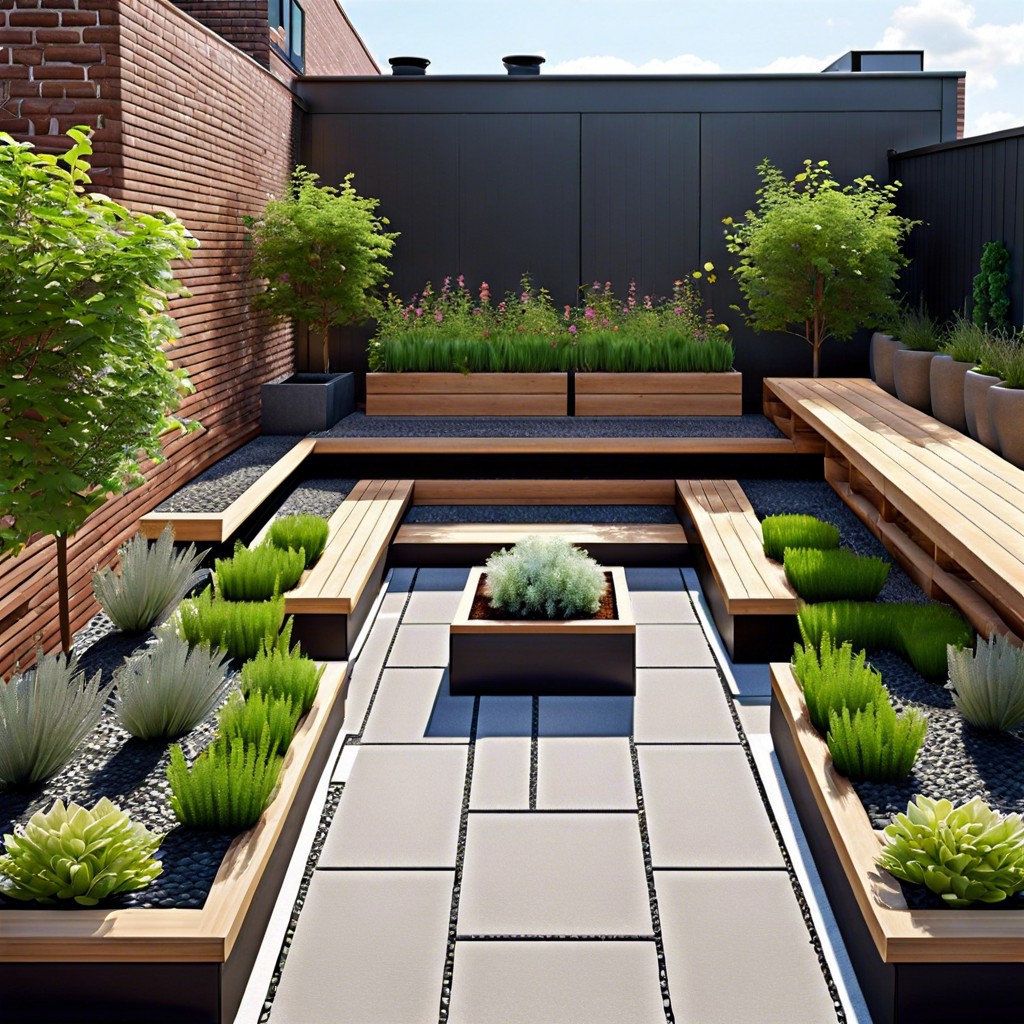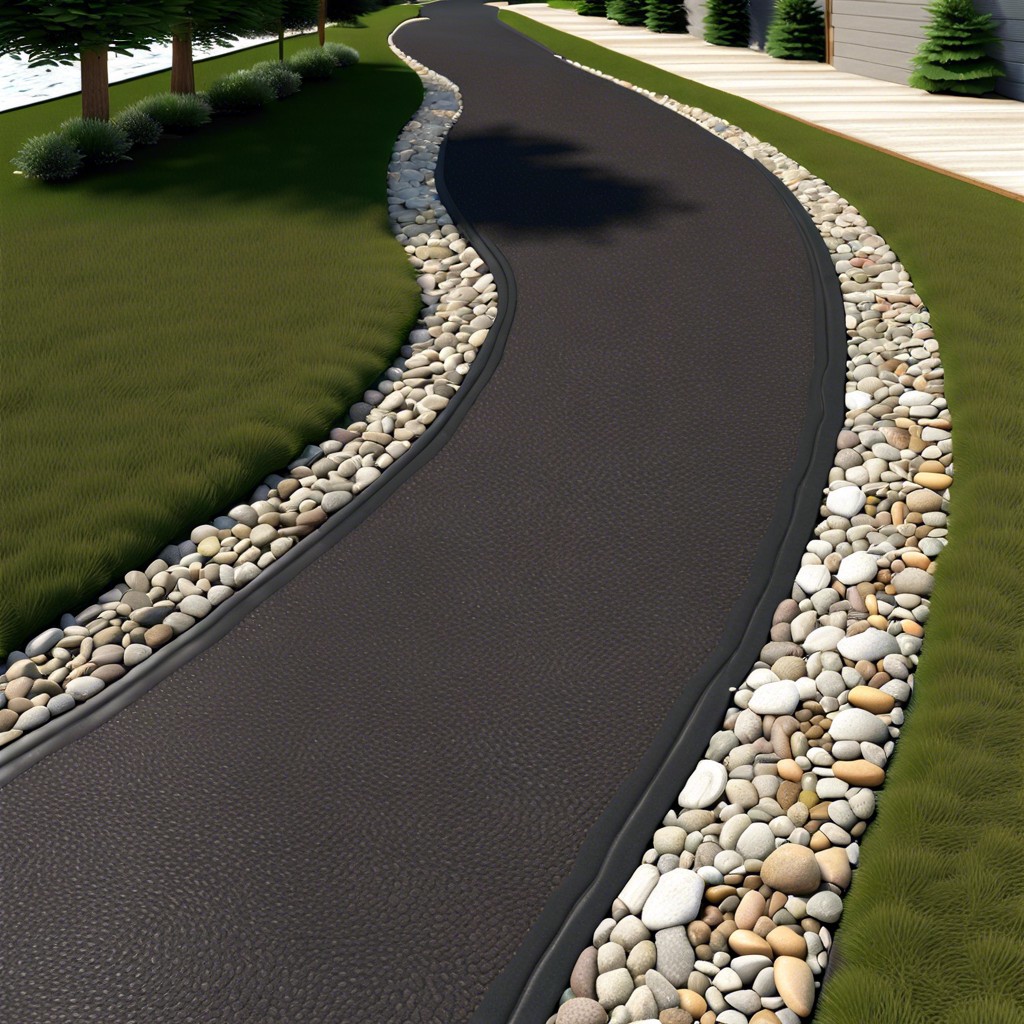Welcome to our practical guide on choosing the perfect patio pavers for your outdoor space, where we’ll guide you through making a solid, stylish selection that meets your needs.
Key takeaways:
- Types of Patio Pavers: Brick, concrete, natural stone, porcelain, and rubber.
- Materials Used in Patio Pavers: Brick, concrete, natural stone, rubber, and porcelain.
- Installation Process of Patio Pavers: Prep the base, lay landscape fabric, add sand, place pavers, fill gaps with sand.
- Maintenance Tips for Patio Pavers: Regular sweeping, occasional rinse-down, prevent weed growth, seal pavers.
- Cost Comparison of Patio Paver Materials: Concrete is budget-friendly, brick is classic but pricier, natural stone is high-end, rubber is affordable and eco-friendly.
Types of Patio Pavers

Stepping into the world of patio pavers is like opening a Pandora’s box of design possibilities. First up, you’ve got your classic brick pavers – the old faithfuls. They weather beautifully over time, telling tales of backyard barbecues and sun-soaked afternoons.
Then there’s concrete, the chameleon of pavers, easily stamped and colored to mimic just about anything. Imagine pulling the wool over your friends’ eyes with concrete that plays a convincing stand-in for pricier stone!
Speaking of stone, natural stone pavers are the aristocrats of the bunch. With elegance seeping through their veins, each piece boasts its signature swirls and hues, from the timeless grace of bluestone to the rugged charm of flagstone.
On the flip side, porcelain pavers are making a splash with their über-modern feel and low maintenance appeal. Durable and versatile, they’re like the swiss army knife in the paver troop.
And let’s not forget about rubber pavers – the dark horse of the lineup. Imagine cushioning your step and playing it eco-friendly, as they’re often made from recycled materials.
Each type is a character, each with its stage to shine, and all with stories to tell. With the right selection, your patio could be the talk of the town or your personal hushed haven. So take your pick, let the pavers lay the groundwork for your outdoor masterpiece.
Materials Used in Patio Pavers
When considering what to lay underfoot outside your backdoor, you’ve got a spread of materials to choose from, each with its own charm and benefits.
Brick exudes a classic charm, perfect for a cozy patio setting, and it’s as tough as old boots. Over time, bricks develop a lived-in look that many find appealing. They’re also recyclable, which adds a feather to your eco-friendly cap.
Concrete pavers are the chameleons of the bunch. They can mimic the look of natural stone or brick and come at a gentler price point. These pavers are durable and offer a range of designs and colors to fit your personal style.
Natural stone, such as slate, limestone, or sandstone, brings a slice of nature right to your doorstep. No two stones are the same, which means your patio is guaranteed a one-of-a-kind appearance. Keep in mind that natural stone demands a higher budget and a bit more tender loving care.
Rubber pavers are the new kids on the block. They’re made from recycled tires, making them an eco-conscious choice that cushions falls and resists slips. They’re ideal for spaces used by kids and the elderly, and they resist weather wear and tear like champs.
Lastly, porcelain tiles add a touch of refinement and are stellar for those aiming to give their outdoor space a more modern vibe. They’re tough cookies too and can withstand extreme weather conditions while still looking sleek.
As you mull over these options, think about how each material reflects your personal style and how it will harmonize with your garden soirees or tranquil outdoor retreat. Just remember, the pavers you pick should reflect the vibe you want to capture and have the endurance to handle Mother Nature’s mood swings.
Installation Process of Patio Pavers
Breaking ground on a new patio project can be a bit like assembling a jigsaw puzzle—it’s all about fitting pieces together just right. But before the first paver touches the ground, a well-prepped base is crucial. Start by plotting out your space and removing any grass or soil to dig down to the required depth. This is definitely where you’ll channel your inner archaeologist, digging with precision to create a flat surface.
Next up, lay down a landscape fabric to ward off those pesky weeds, keeping your patio pristine. With the base down, the stage is set for a layer of sand. Think of it as the bed for your pavers to rest on. A little tip: keep that sand layer smooth, like the icing on a cake, to prevent any wobbly stones down the line.
Picture yourself playing with building blocks; laying the pavers is not all that different. Set each stone with care, keeping the gaps consistent. Tap them gently into the sand using a rubber mallet—the sweet sound of progress! Now, you’re seeing your vision come to life with each paver placed, engaging not only with the materials but with the space itself.
As you near the grand finale, sweep sand over your newly laid pavers, filling in the cracks. This isn’t just busywork; it’s like dotting the i’s and crossing the t’s—sealing the deal for a firm, supportive fit. With your pavers snug and secure, you’ve officially laid the groundwork for countless summer barbecues and cozy autumn fireside chats. Just remember, the right preparation and patience during installation are the secret sauce to a long-lasting patio.
Maintenance Tips for Patio Pavers
Keeping your patio pavers in top-notch condition doesn’t require a degree in rocket science! A bit of elbow grease and some simple know-how will have them looking sharp throughout the seasons. Let’s dig into a few straightforward maintenance tips:
First off, regular sweeping is your first line of defense. Leaves, dirt, and debris are more than just an eyesore; they’re the prime culprits for staining and promoting weed growth. A stiff-bristled broom can be your best friend here, helping you to whisk away those unwanted guests.
Next, consider the occasional rinse-down with your garden hose to keep things looking fresh. If you’re dealing with tougher stains, gentle detergent and a good scrub can work wonders. However, stay clear of harsh chemicals that might damage the pavers or harm your green buddies in the garden.
Weed growth can be a real mood killer. Prevent these party crashers by using a good sand filler between pavers, which helps to block their path. In case they do sprout up, pull ’em out or use a natural herbicide for a guilt-free weed massacre.
Lastly, sealing is the secret sauce for paver longevity. This process, usually done every couple of years, not only keeps them looking new but also provides a protective coat against the elements, stains, and fading.
Remember, a little love goes a long way. Regular care keeps your patio an inviting retreat for that morning coffee or evening chill-out session. Keep these tips in your back pocket and your pavers will surely thank you!
Cost Comparison of Patio Paver Materials
When planning your patio, budgeting is as essential as picking out the perfect paver pattern. Concrete pavers are friendly to your wallet but also offer a range of styles and colors. They emulate more expensive options without breaking the bank, making them a savvy choice for a budget-conscious project.
Brick pavers, on the flip side, bring a classic charm to your outdoor space but generally nudge the price up a bit. They boast longevity and a timeless appeal, which could be worth the extra pennies if you’re after that traditional look.
Natural stone pavers are the crème de la crème of patio materials, with prices that reflect their status. For those who appreciate natural beauty and are willing to invest more for that authentic touch, stone such as bluestone, flagstone, or travertine will elevate your patio to the next level.
Then there’s the hidden gem – rubber pavers. They might not be your first thought, but for a slip-resistant, eco-friendly option, they’re often kind on your budget and on your feet – perfect for a playful backyard vibe.
Remember, each material brings not only its price tag but also varying levels of durability and maintenance needs. Some might be more upfront but save you in upkeep costs down the road. The trick is balancing the initial investment with the long-term value.




